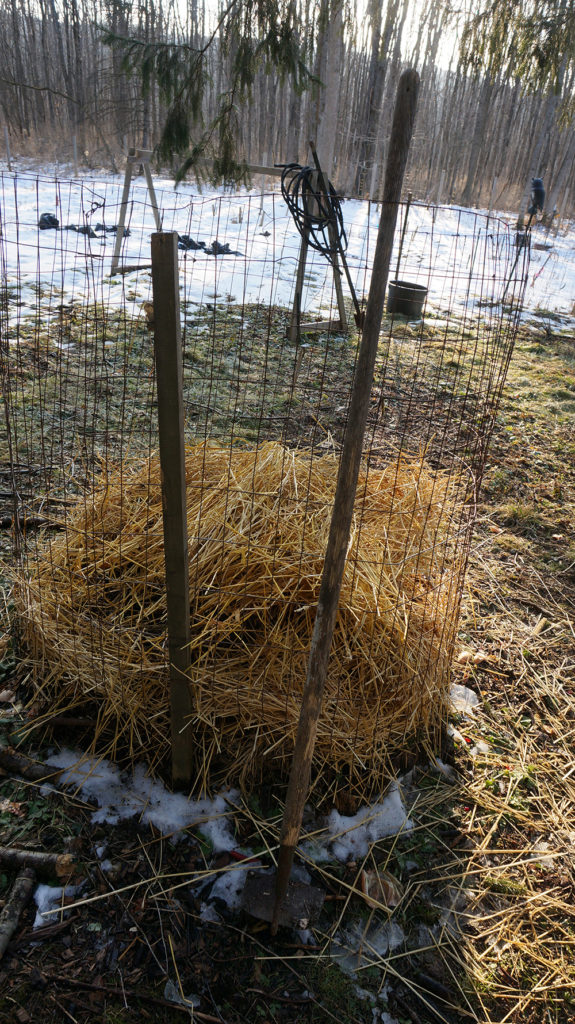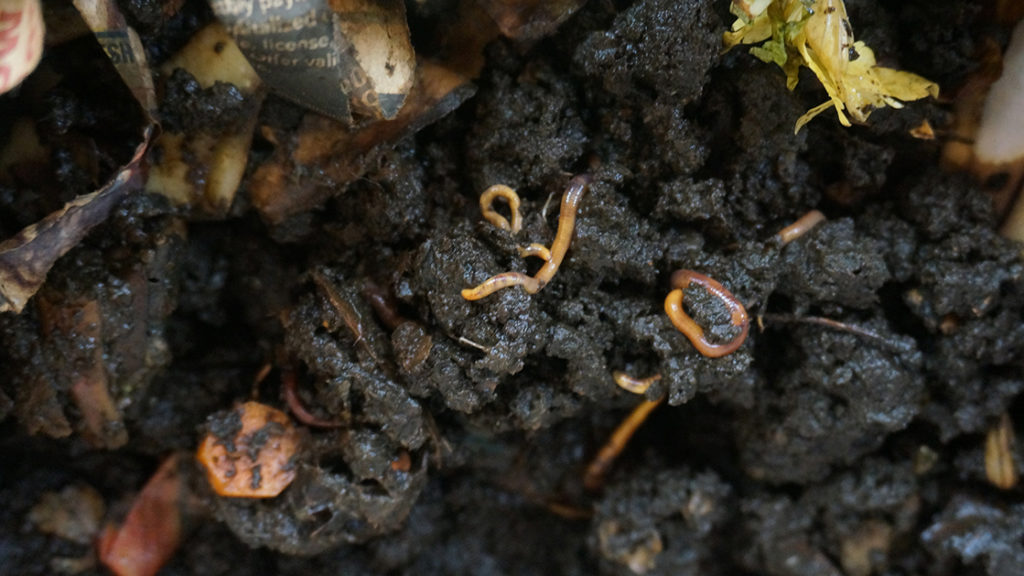Village Gardener: Composting
by Georgeanne Vyverberg –
Anyone who has been reading this column knows I am passionate about compost. It is for me the only way to make garden soil become the nutrient rich living matter that grows healthy plants. When you have good healthy soil then you will have vegetables and flowers looking their best, and able to fight off disease and pests.

Food scraps make up nearly a quarter of landfills so by composting yard and kitchen wastes we can help put nutrients back in to the earth from which they came instead. It can be as simple and inexpensive as the method I prefer which is called piling, or bins and tumblers or even vermiculture, which uses worms to break scraps into compost. Whatever method you choose will reward you with a healthy addition to your garden.
It’s really pretty simple and maybe the winter is not the perfect time to start, but it is the perfect time to think and plan for it. Even if you have a small yard most likely you will be able to find space for a bin or even better one of those tumblers. I have a friend who lives in an apartment complex, where she has a very small patio and she uses a tumbler. She harvests about a large wheel barrow per year for her tiny patio garden. Some people might worry that there would be an odor, but there is not since she turns it often as the compost materials work toward compost. Other methods include building a bin using old lumber, pallets or even posts with wire. Bins should have lots of open spaces to allow the materials aeration, an important component. The size of the bin should be about three by three feet. Any bigger will make it difficult to turn the compost. I have a large yard and a good shady place out of view, where I can use the pile method. It’s just that..a pile. I start with a few small brushy branches on the ground just to allow some air circulation. Then I lay a thick layer of “brown” materials like leaves, sawdust, straw, shredded paper, and coffee filters. On top of this I place about a third as much of “green” materials like lawn clippings, garden cuttings [chopped small] and kitchen scraps. Use anything except onions and garlic, which discourage microbial action, and never meat or oily things like a dressed salad. These may draw the local racoon or fox or other critters. Also, the temperature of a pile or bin isn’t consistent enough to completely digest those materials. Last year I had a group of crows tearing up my compost pile until I dug a hole in the center of the pile and buried things a good foot deep. This turned out to be a good thing because scraps were being buried where most of the decomposition was happening. I like to put a shovel or two of garden soil on top of every few layers. This brings in those wonderful microbes that will work the magic of making compost. You can buy compost starter, but good garden soil works as well. Anyhow, continue on in that manner with brown followed by green materials. If you want to know if your compost is working you could buy a thermometer. It will register 150-160 degrees when things are working. But you can easily feel the heat with your hand. Now it’s vitally important to turn that pile every week or so to keep it working. Also, it may need watering, particularly a new pile. An active pile will take anywhere from 1-4 months to finish depending on how often it is turned.

Vermiculture is the process where worms turn scraps, lawn and garden waste into compost using worms. This may not be for everyone since it takes more monitoring. Also, it may not be your cup of tea if you are squeamish about worms. The worms, which need to be a variety of red wigglers, live in bins with a bedding of newspapers or wood mulch. Food scraps are put on top or underneath the bedding. Care is needed to not put too much or too little food. I myself have never done it, but I have friends who swear by the ease and results. The best thing is that the worm bins can take up really small places like in the basement or under a counter in the kitchen so you can be generating compost in the middle of the winter. They can’t easily survive in the winter outside and unprotected. Allen’s Hill Library has a worm bin bed in the library, and I am sure the director, Emily Peccora, will be happy to show it to you and answer questions. Patrons can bring food scraps and eventually get some compost in return. This summer I plan on starting one and will keep you updated on more details on how it works for me. Would love to hear from readers if they have a worm bin farm.
Okay, so you don’t think composting at home is something you want to do. Maybe you live in an apartment. If you still would like to keep your food scraps from filling a landfill there are other options. Several composting companies have formed to do it for you.
Several years ago, Al Zappatella and his partner Celeste Arlie decided to try to get the local communities of Prattsburgh and Naples, NY on board with Community wide compost making. They had been doing vermicomposting for several years, and many of their friends were adding their kitchen scraps as well, when they began a free pick up weekly from households as well as small restaurants and grocery stores in both towns of Prattsburg and Naples. It has since included pickup at the schools of both towns. Al has his reasons for starting this endeavor. “In an effort to make the world a little greener…” he says and who can argue with that!
Community Composting in Rochester, NY [communitycomposting.org] started in 2013 by Brent Arnold and Steven Kraft with collection from local businesses, but since have expanded to urban pickups. You receive a fresh bucket weekly to refill. After a year you receive back either compost, a plant or you can donate your share to a community project or garden. The organization donates compost to community gardens and other projects. Costs are affordable and people can pair up to reduce them further. The scraps are transported to Vermigreen, owned by Ryan Heberle, in Palmyra, NY for composting. Ryan’s family has been involved in vermiculture since 1989. They have a great website, which has very detailed and informative information on making your own worm bin.
The idea of community composting is happening all over the country. It’s inspiring to see people, mostly young people, so passionate about a process than can only bring health back to our overworked and depleted soils. There are communities picking up garbage using bicycles and horse and wagon as well as the more conventional methods. Research has shown that using compost has enriched soils, and in the process produces healthier plants that can fight off diseases and pests. It’s such a simple process really, anyone can do it and its free. It was first stated by Henry IV of France that every peasant in his realm would have the means to provide a “chicken in every pot” and then also Herbert Hoover in his bid for the presidency. But me, I’d like to see a compost pile and a garden in every yard along with a flock of hens. But that’s just me.